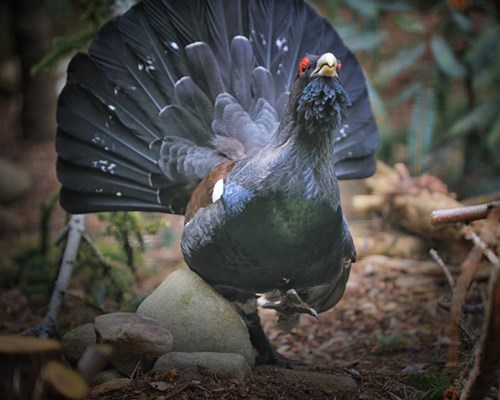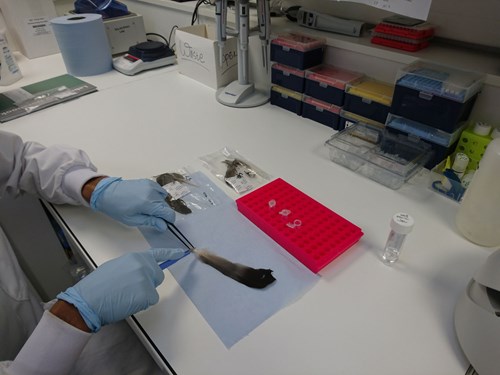WildGenes Blog Counting capercaillie using feathers from the forest floor…
25/03/2017 in RZSS

DNA analysis is a powerful tool when it comes to informing conservation practices and population management. For instance, did you know it can be used to evaluate the number of individuals in the wild without actually having to see them? Working with various partners (Scottish Natural Heritage SNH; the Game and Wildlife Conservation Trust GWCT; and The World Pheasant Association WPA) the RZSS WildGenes laboratory are aiming to do just that in order to improve current population estimates of the capercaillie in Scotland.
Estimating the size of a wild population is desirable for many reasons. For rare or endangered species, monitoring the number of individuals that remain is crucial, to ensure that the population does not decrease beyond a critical level (which might challenge the continuation of the species).

Previously driven to extinction in the UK, capercaillie were reintroduced in the 19th century and today have a limited distribution across Scotland, with strongholds around Strathspey. As populations have declined, efforts have been made to improve estimates of the overall population size in Scotland using traditional survey methods. These often rely upon finding capercaillie groups and then identifying individual birds within each group (so as not to count the same bird twice), which can prove time consuming and challenging.
DNA on the other hand can also be used effectively to ‘count’ individuals but has the added advantage that the individual does not need to be present to be counted. Biological material, such as feathers or faecal samples, often get left behind at lek or brood sites. DNA can be extracted from these by using, for example, the tip of the feather quill (where it once was attached to the body and a few skin cells may still be present), and sets of DNA markers can then be employed to help identify capercaillie individuals. Finally, estimates of the population size can then be made from the unique DNA profiles that are generated from these samples. In the WildGenes lab the team are doing just that – estimating the size of Scotland’s capercaillie populations using feathers that have been picked up off the forest floor.
Collecting feathers for this is done in a careful and methodical fashion by experienced field-workers, to ensure that as many individual capercaillie are represented in the sample set as possible. It is then down to the lab to analyse the resulting DNA profiles that emerge, to estimate the number of capercaillie individuals sampled. We can effectively ‘keep an eye’ on the number of capercaillie without keeping an eye on the capercaillie themselves!
Featured Articles

An update from the Budongo Forest
19/04/2024 in Conservation

Edinburgh Zoo named best zoo in Scotland
15/04/2024 in Edinburgh Zoo

























Follow EZ